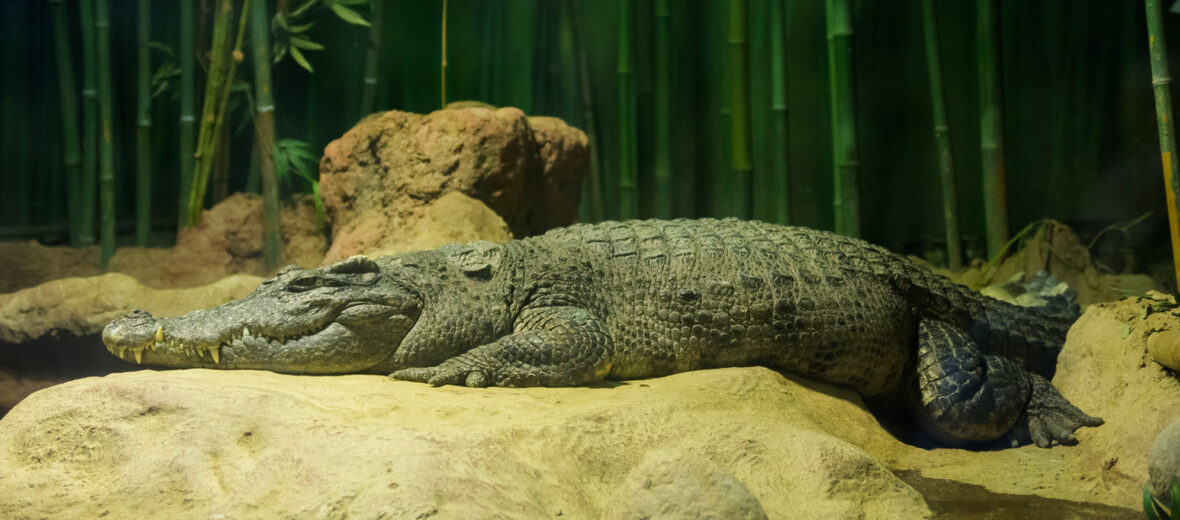
Among the most highly endangered crocodilians in the world, the Siamese crocodile makes their home in the Mekong River basin and the wetlands in Cambodia. They prefer slow-moving streams and rivers, lakes, seasonal oxbow lakes, marshes, and swamplands. Sadly, Siamese crocs are listed as Critically Endangered by the IUCN, with fewer than 1,000 estimated individuals in the wild. This is due to habitat destruction, hunting, and introduction of invasive species. Their numbers are also decreasing.
First the Stats…
Scientific name: Crocodylus siamensis
Weight: Up to 154 lbs.
Length: Up to 6.9 feet
Lifespan: Up to 35 years
Now on to the Facts!
1.) Adults are very territorial and ward off others via slapping their head loudly down onto the water’s surface, as well as snapping their jaws on the top of the water.
2.) Dominant crocs swim higher in the water, submissive crocs swim lower in the water.
3.) Fragmentation of their habitat – due to waterway destruction and vegetation removal – has been shown to cause a lack of juveniles and an increase of infertile eggs, in abandoned nests.
4.) These crocs communicate via sounds, postures, movement, touch, and odors excreted by their 4 scent glands.
5.) Typical with crocodilians, they are ambush predators. These beasts will lay in wait, just under the water, for an approaching mammal to take a drink. Then they strike; pulling their prey into the water, drowning it.
But wait, there’s more on the Siamese crocodile!
6.) They also eat fish, amphibians, and other reptiles.
7.) Females lay up to 50 eggs each breeding season.
Did you know…?
When a crocodile loses a tooth, the missing tooth is replaced rapidly. In their lifetime, they can go through around 8,000 teeth.
8.) The male, female, and hatchlings all live, for at least a short while, as a family unit.
9.) Siamese crocodiles can mate with saltwater crocodiles, creating a hybridized croc that is much larger then the original Siamese version.
10.) A crocodile’s hearing is so keen, they can even hear the unborn crocs calling from inside their eggs.
Now a Short Siamese Crocodile Video!
Also, check out the Critter Science YouTube channel. Videos added frequently!
Want to suggest a critter for me to write about? Let me know here.




Leave a Reply